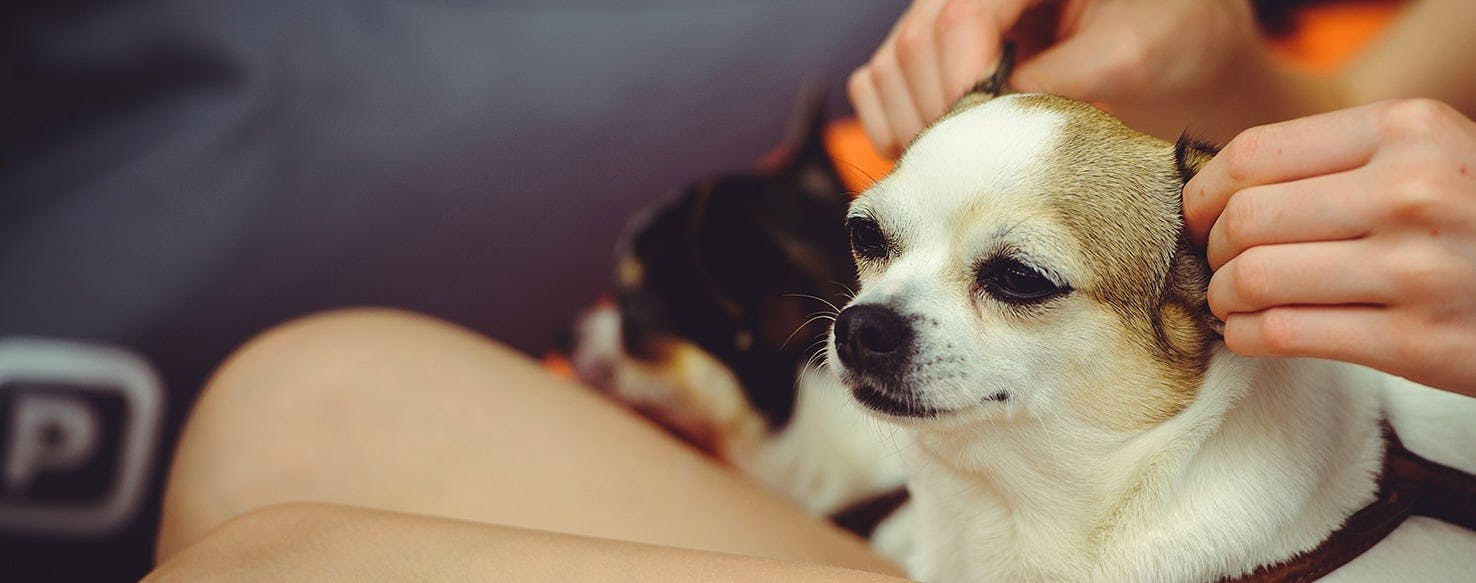- Home
- The Daily Wag!
- Senses
- Can Dogs Feel Massages?

After a long day at work, most people appreciate a good massage. That deep, steady pressure on our tired and aching muscles has many wonderful properties, from deep relaxation to the release of 'unknotting' through to recovery from injury. But more than that, a great massage leaves you feeling on top of the world, in a relaxed and carefree way.
So what about dogs?
Do they feel the same relaxing effects of massage and, indeed, can they reap the same benefit to their general well-being as people?
The short answer is a big "Yes" since massage is a great way of connecting with your dog and can alleviate a number of problems including anxiety and arthritis.
In the same way a massage makes us feel sleepy and relaxed, so will a successful doggy massage. Indeed, the reasons to massage a dog are much the same, which is to relax the mind by making the body feel good or to stimulate blood circulation to the muscles and joints, to promote recovery from injury.
You should never force a dog to accept being massaged and always stop if the dog is anything other than willing. A dog that wriggles, whines, or refuses to relax is trying to tell you something. It might be they aren't comfortable (perhaps lying on a hard surface), are in pain, or you plain aren't massaging them right. Whatever the reason, stop and review what you're doing and how.
However, remember that all dogs are individuals. For every dog that is friendly and would rather lick the mailman than bark at him, there's another dog who is overly anxious, fearful, or perhaps even aggressive. Since massage involves touching the dog to induce a state of deep relaxation, if that dog dislikes being stroked, then a massage isn't going to go well.
But on a positive note, for those dogs that embrace the sensation of massage, there are scientifically proven benefits. Indeed, massage is a well-recognized part of veterinary physiotherapy with a respected role to play in aiding the mobility of arthritic dogs and recovery after orthopedic surgery. In addition, behaviorists working with stressy or anxious dogs will use massage as a way of teaching the dog to let go of a highly aroused state and become deeply relaxed.
And finally, when all's said and done, we get as much out of massaging the dog as they do. Touching and petting a living creature helps reduce human blood pressure and does the heart good...in more ways than one!
Body Language
Signs a dog is feeling a massage are those of deep relaxation. Look for the following signs which show you are hitting the right spot:
- Wag Tail
- Ears Drop
- Stomach Flip
- Tongue Hanging
Other Signs
More signs to watch out for if your dog is enjoying a massage include:
- Sighing
- Sleepiniess
- Calm Behavior
- Deep Breathing
- Slowed Heart Rate
- Relaxed Limbs
- Heavy Eyelids
When something endures the test of time, this often indicates it helped people who then passed the skill forward to the next generation. It is therefore relevant to realize just how ancient the practice of massage is, which dates back over 5,000 years! Classical civilizations used massage as a means of relieving pain, healing injuries, and preventing illness.
It is said that Julius Cesar was accompanied on his various wars with a personal masseur, who also worked on Cesar's war dogs. It would be nice to think this is perhaps the beginning of massage making a cross-over to canines. In truth, massage as an animal therapy started earlier than this. Ancient Egyptian hieroglyphics and old Indian writings, tell of animal healers using hands-on therapies such as massage.
Moving forward to the modern day, massage is one of a range of ancient therapies that have a place in veterinary physiotherapy. There are recognized techniques that are carefully taught including clapping, coupage, effleurage, kneading, percussion, and petrissage.
It's interesting to note that as ancient as massage therapy is, it's still evolving and changing. A modern day take on massage for dogs is Tellington T Touch. This is a method of applying slow, sustained pressure and gentle movement, in order to alleviate anxiety. A mix between massage and reflexology, it doesn't matter that the dogs don't know the science because the important thing is the benefits are real.
Massage is a type of hands-on or physical therapy. A combination of hand movements, pressure, and movement combine to have different effects on the muscles and circulation to the area. This is extremely beneficial as a means of passively toning and conditioning the muscles. Also, increasing the blood supply helps bring healing cells to the area and remove naturally occurring toxins.
Massage is also a great way of gently stretching and conditioning muscles that have become weak through lack of use. A good example is the arthritic dog, who has become stiff through lack of exercise on his sore joints. With appropriate pain relief, a gentle return to exercise is going to be beneficial. However, just as an athlete warms up before a race (and cools down), those joints will benefit from the gentle warming effects of massage ahead of actually slipping on a collar and leash.
Only a dog that trusts you and relaxes will benefit from massage. Therefore, it's crucially important to first work with the dog so that they are comfortable with hands-on contact. If the dog pulls away from being stroked, then they are not going to appreciate the more intense nature of massage.
Step number one is to praise the dog and offer a small titbit when they approach you. Obviously, if they are your dog then this bit is super-easy, but this may not be the case with an unfamiliar dog. Avoid making eye contact (as this is threatening to dogs) and wait for them to approach you. Then, talk in a quiet sing-song voice and drop treats on the ground to help embolden them.
Once the dog is happy with your presence and being stroked, proceed to the next step. Make sure you have a comfortable padded surface for the dog to lie on. A VetBed is ideal as is a thick blanket. Encourage the dog to lie in a comfortable position, but again, when starting out, don't force them into any particular position.
Once the dog has settled, you may wish to have an assistant gently cuddle the dog, so as to steady them in one place. Start with light, slow strokes of the hand, to test out how the dog reacts. Praise them in a loving voice as they remain calm or relaxes further. Gradually increase the pressure to a therapeutic level.
Always work under the direction of a veterinary physiotherapist. Be aware that whilst massage is beneficial, there are circumstances (such as infection or cancer) when massage of a particular area isn't advisable.
Have questions or concerns about your pet?
Chat with a veterinary professional in the Wag! app 24/7.
Get Vet ChatSafety Tips for Massaging a Dog:
- If the dog growls or pulls away, this could be a sign they are in pain. Stop and reassess your technique.
- If in doubt, check in with a vet. For conditions such as skin infections or bone cancer, massage is contra-indicated as there is a risk of it worsening the condition
- If your dog is sick or recovering from surgery or an injury, always have a vet physiotherapist show you the correct way to massage the dog. Again, there is a risk of bad technique making matters worse rather than better.
Written by Pippa Elliott
Veterinary reviewed by:
Published: 04/17/2018, edited: 04/06/2020
More articles by Pippa Elliott
